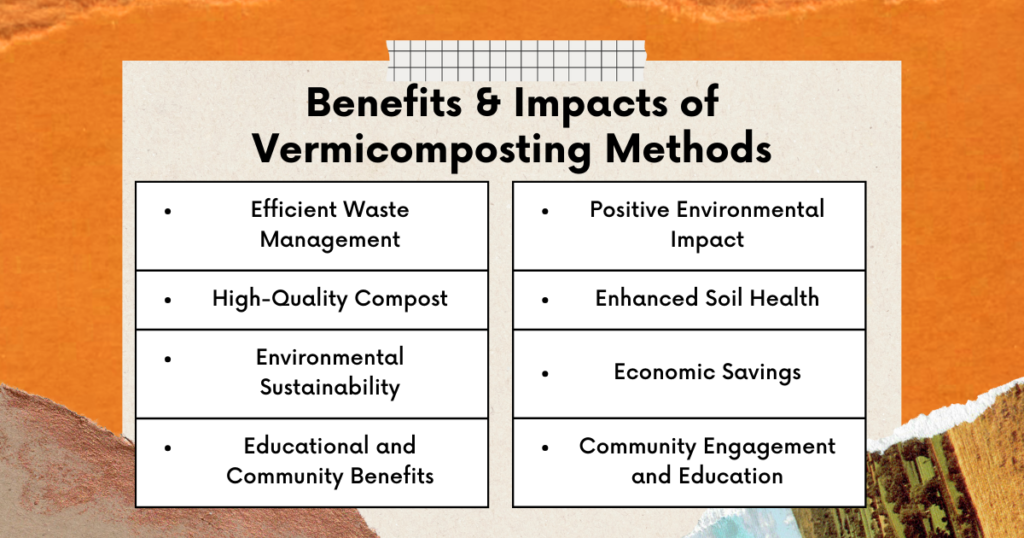A Comprehensive Guide to Earthworm-Based Waste Management
Vermicomposting is a cutting-edge and environmentally responsible method of managing organic waste that recycles organic materials into nutrient-rich compost by using earthworms’ natural processes. Due to its effectiveness and sustainability, this practice has become more and more popular as a means of turning garden waste and leftover food into useful resources. We will examine the foundations of vermicomposting in this blog, with an emphasis on important ideas like earthworms, worm castings, vermicompost bins, red wiggler worms, and the recycling of organic waste.
Understanding Vermicomposting
Vermicomposting is one of the many methods of traditional composting that uses earthworms to speed up the breakdown of organic waste. By providing a favorable environment for these worms, organic waste is more efficiently broken down, resulting in high-quality compost.
Earthworms: The Unsung Heroes
Earthworms are central to the vermicomposting process. These remarkable creatures are natural decomposers, feeding on organic waste and transforming it into valuable compost.
Role of Earthworms in Composting
Earthworms consume organic waste and break it down through their digestive systems. As they feed, they excrete the waste in the form of worm castings, which are rich in nutrients and beneficial microorganisms. This process not only reduces the volume of waste but also enhances the quality of the compost produced.
Types of Earthworms Used
While numerous forms of earthworms can be used for composting, red wigglers (Eisenia fetida) are the most typically used. They are ideal for indoor and small-scale composting due to their high feeding and reproductive rates. Other species, such as European nightcrawlers (Eisenia hortensis) and African nightcrawlers (Eudrilus eugeniae), can also be employed, depending on the composting conditions and requirements.
The Value of Worm Castings
Worm castings, also known as vermicast or worm manure, are the nutrient-rich byproduct of vermicomposting. They are highly valued for their numerous benefits to soil health and plant growth.
What Are Worm Castings?
Worm castings are the digested and processed organic matter expelled by earthworms. These castings are high in critical nutrients including nitrogen, phosphorus, and potassium, which are necessary for plant health. Worm castings also include helpful microbes, which help to improve soil fertility.
Nutritional Benefits
- High Nutrient Content: Worm castings are a natural source of essential nutrients, making them an excellent soil amendment.
- Improved Soil Structure: The addition of worm castings helps to improve soil texture and aeration, promoting better root growth and water infiltration.
- Enhanced Microbial Activity: The beneficial microorganisms present in worm castings contribute to a healthy soil ecosystem, supporting plant growth and disease resistance.
Application of Worm Castings
Worm castings can be used in various ways, including:
- As a Soil Amendment: Mix worm castings into garden soil to improve its nutrient content and structure.
- In Potting Mixes: Add worm castings to potting soil for container plants to enhance growth and fertility.
- As a Fertilizer: Use worm castings as a natural fertilizer by applying them directly to plants or as part of a compost tea.
Vermicompost Bins: The Heart of Vermicomposting
Vermicompost bins provide a controlled environment for the composting process. They are designed to house earthworms and manage the decomposition of organic waste efficiently.
Types of Vermicompost Bins
Several types of vermicompost bins are available, each suited to different needs and environments:
-
Tumbling Bins: These bins are designed to be rotated or tumbled, making it easy to mix and aerate the composting material. They are often used for larger-scale vermicomposting.
-
Stackable Bins: These bins consist of multiple trays stacked on top of each other. Worms migrate through the trays as composting progresses, making it easy to harvest finished compost from the bottom tray.
-
Worm Towers: These vertical bins allow worms to move through the tower, breaking down waste as they go. They are compact and suitable for small spaces.
Choosing the Right Bin
When selecting a vermicompost bin, consider factors such as:
- Size and Capacity: Choose a bin size that matches the volume of organic waste you generate.
- Material: Bins can be made from plastic, wood, or metal. Select a material that suits your climate and space.
- Ventilation: Ensure the bin has adequate ventilation to provide oxygen and prevent unpleasant odors.
Setting Up a Vermicompost Bin
To set up a vermicompost bin, follow these steps:
- Prepare the Bin: Set up the bin with appropriate bedding material, such as shredded newspaper or cardboard.
- Add Worms: Introduce earthworms into the bin, along with a small amount of organic waste to start.
- Monitor Conditions: Maintain proper moisture levels, aeration, and temperature to create an optimal environment for the worms.
Red Wiggler Worms: The Ideal Composting Worms
Red wiggler worms are the preferred species for vermicomposting due to their ability to thrive in confined environments and their efficient waste processing capabilities.
Why Red Wigglers Are Preferred
Red wigglers are well-suited for vermicomposting for several reasons:
- High Reproduction Rates: They reproduce quickly, allowing for a large population to process organic waste efficiently.
- Adaptability: Red wigglers can thrive in a range of conditions and are capable of handling various types of organic waste.
- Efficient Decomposition: Their feeding habits and digestive processes make them effective at breaking down organic matter and producing high-quality compost.
Caring for Red Wigglers
To ensure the health and productivity of red wigglers, provide them with:
- Adequate Food: Feed them a balanced diet of fruit and vegetable scraps, coffee grounds, and crushed eggshells.
- Proper Moisture: Maintain a moist but not soggy environment within the bin.
- Optimal Temperature: Red wigglers thrive in temperatures between 55°F and 77°F (13°C and 25°C). Avoid extreme temperatures that can harm the worms.
Organic Waste Recycling: The Heart of Vermicomposting
Organic waste recycling is a crucial aspect of vermicomposting. By recycling organic materials, we reduce waste, conserve resources, and produce valuable compost.
 Read more: Traditional Composting Methods…
Read more: Traditional Composting Methods…
Benefits of Organic Waste Recycling
- Waste Reduction: Recycling organic waste through vermicomposting reduces the volume of waste sent to landfills, mitigating environmental impact and landfill pressure.
- Resource Conservation: By converting waste into compost, we recycle nutrients and reduce the need for synthetic fertilizers and chemical soil amendments.
- Environmental Impact: Organic waste recycling contributes to a healthier environment by lowering greenhouse gas emissions and promoting sustainable practices.
Implementing Organic Waste Recycling
To implement organic waste recycling effectively:
- Separate Waste: Set up a system for separating organic waste from other types of waste in your household or community.
- Use a Vermicompost Bin: Employ a vermicompost bin to process organic waste and produce compost.
- Educate and Advocate: Promote awareness about the benefits of organic waste recycling and encourage others to adopt similar practices.
Benefits of Vermicomposting Methods
Vermicomposting offers a range of benefits that contribute to sustainable waste management and environmental health.
1. Efficient Waste Management
Vermicomposting processes organic waste efficiently, reducing waste volume sent to landfills and minimizing waste management expenses. The inclusion of earthworms accelerates decomposition, making it a faster and more effective process than traditional composting.
2. High-Quality Compost
Vermicompost, also known as worm castings, is nutrient-dense and contains helpful microbes. This high-quality compost increases soil fertility, improves plant health, and encourages environmentally friendly gardening and agriculture activities.
3. Environmental Sustainability
Vermicomposting promotes environmental sustainability by recycling organic waste and lowering the need for synthetic fertilizers. The procedure reduces greenhouse gas emissions and encourages natural resource conservation, resulting in a healthier Earth.
4. Educational and Community Benefits
Vermicomposting is used as an instructional tool, teaching people and communities about sustainable waste management and soil health. Community-based vermicomposting projects can raise environmental awareness and motivate individuals to take action to reduce trash and conserve resources.
Read More: Traditional Home Composting Methods…
Impacts of Vermicomposting
The impacts of vermicomposting extend beyond immediate waste management benefits, influencing various aspects of environmental and community health.
1. Positive Environmental Impact
Vermicomposting decreases the environmental impact of organic waste by reducing methane emissions from landfills and improving soil health through the use of compost. The approach helps to reduce greenhouse gas emissions and promotes sustainable land use practices.
2. Enhanced Soil Health
Vermicompost enhances soil health by increasing nutrient availability, improving soil structure, and stimulating beneficial microbial activity. This promotes plant development, reduces erosion, and increases water retention.
3. Economic Savings
Vermicomposting has the potential to save money by lowering the requirement for waste disposal services and synthetic fertilizers. Producing high-quality compost is also a low-cost method of soil enrichment and plant nutrition.
4. Community Engagement and Education
Vermicomposting programs can help communities adopt sustainable practices and promote awareness about environmental challenges. Educational seminars and workshops can educate people about the benefits of vermicomposting while also encouraging them to participate in waste reduction efforts.
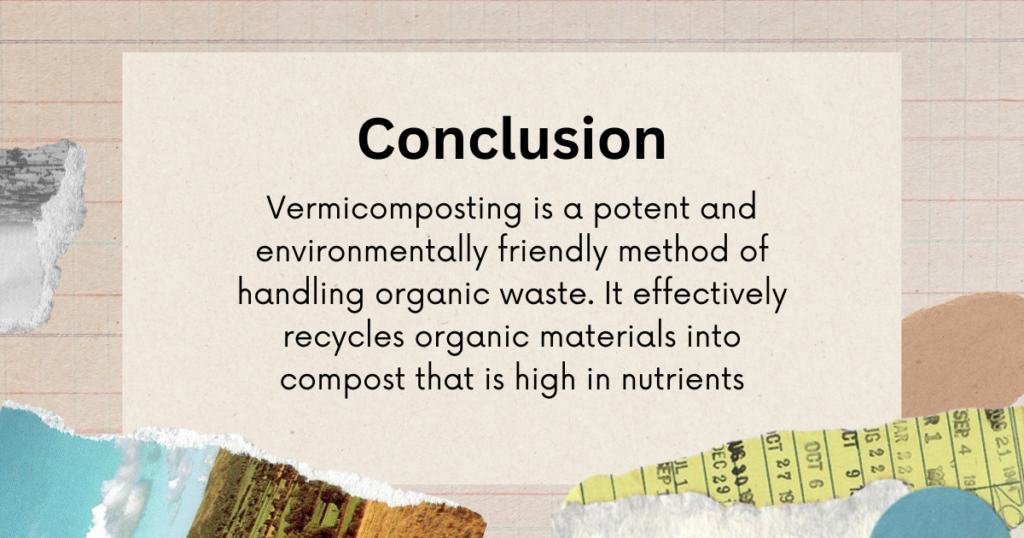
Conclusion
Vermicomposting is a potent and environmentally friendly method of handling organic waste. Through the utilization of earthworms’ inherent activities, this approach effectively recycles organic materials into compost that is high in nutrients. Important ideas like red wiggler worms, vermicompost bins, earthworms, worm castings, and organic waste recycling emphasize how crucial this practice is for fostering soil health and environmental sustainability.
Vermicomposting has many advantages, including effective waste management, the creation of high-quality compost, favorable effects on the environment, and community involvement. Vermicomposting is a useful and efficient way to promote a healthier and more sustainable planet as we look for new and creative ways to manage waste and conserve resources.
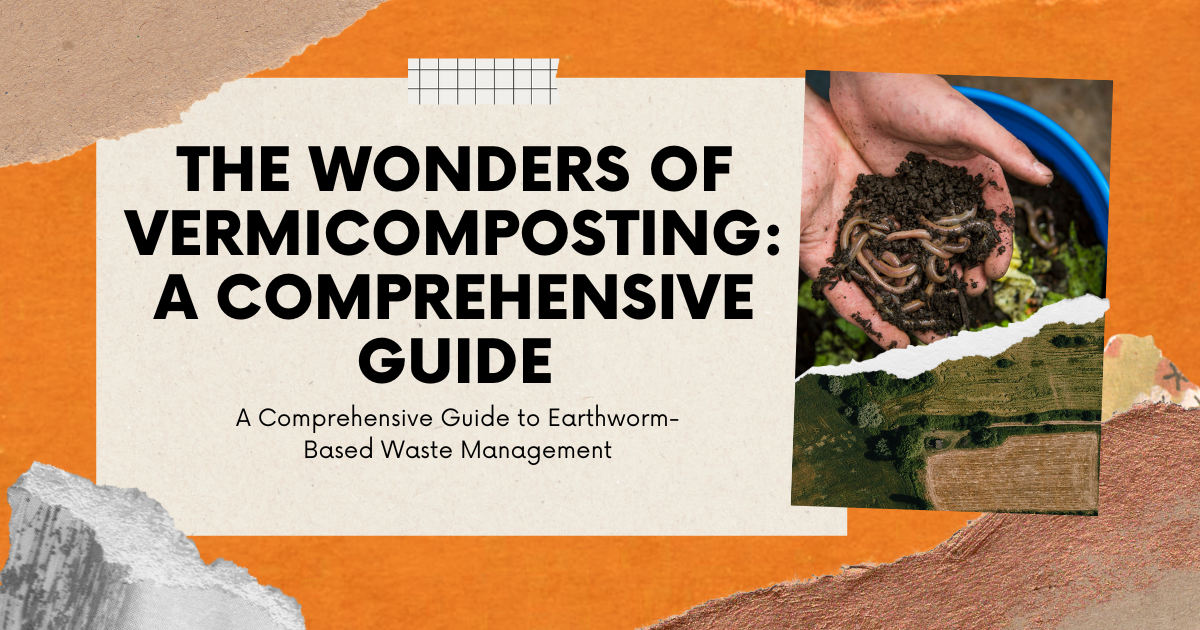
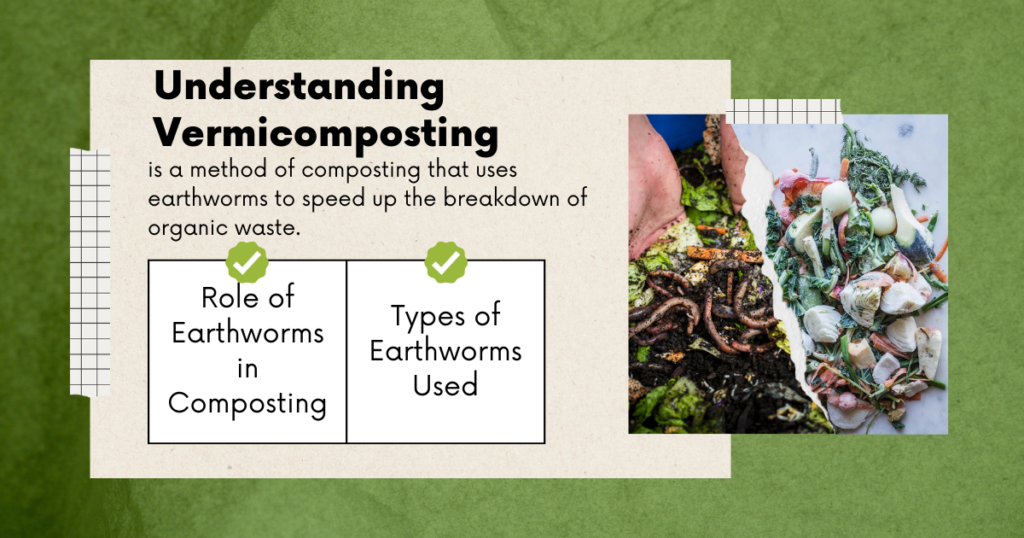
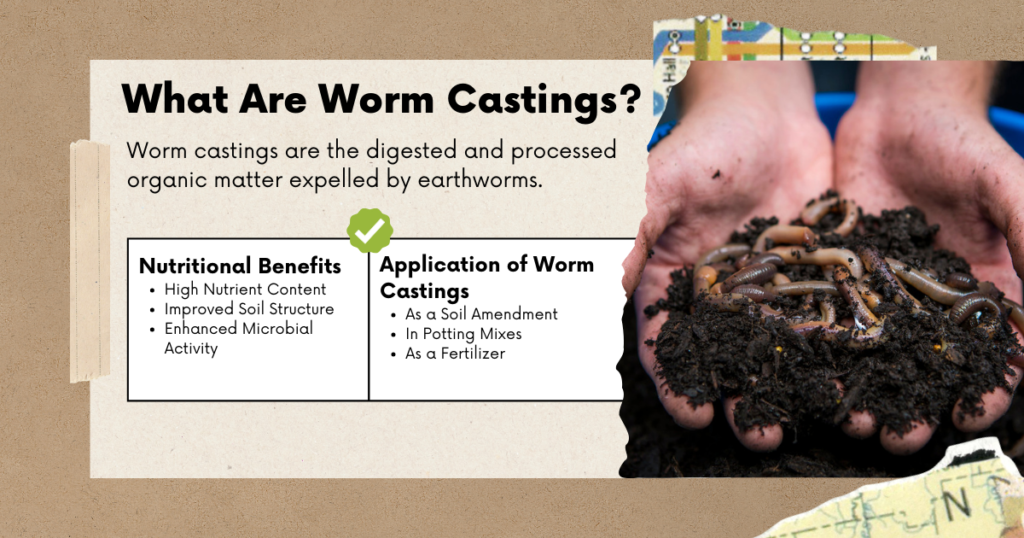
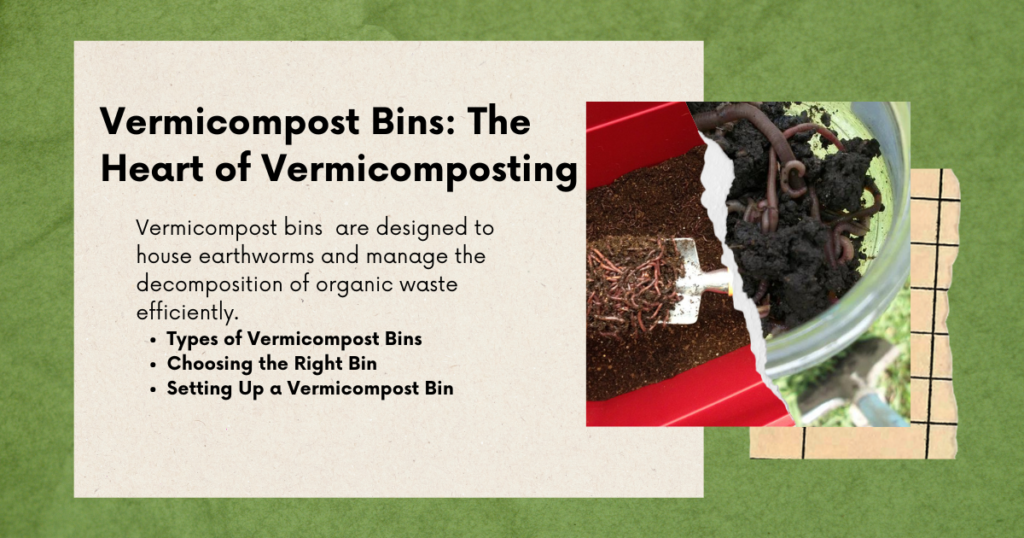
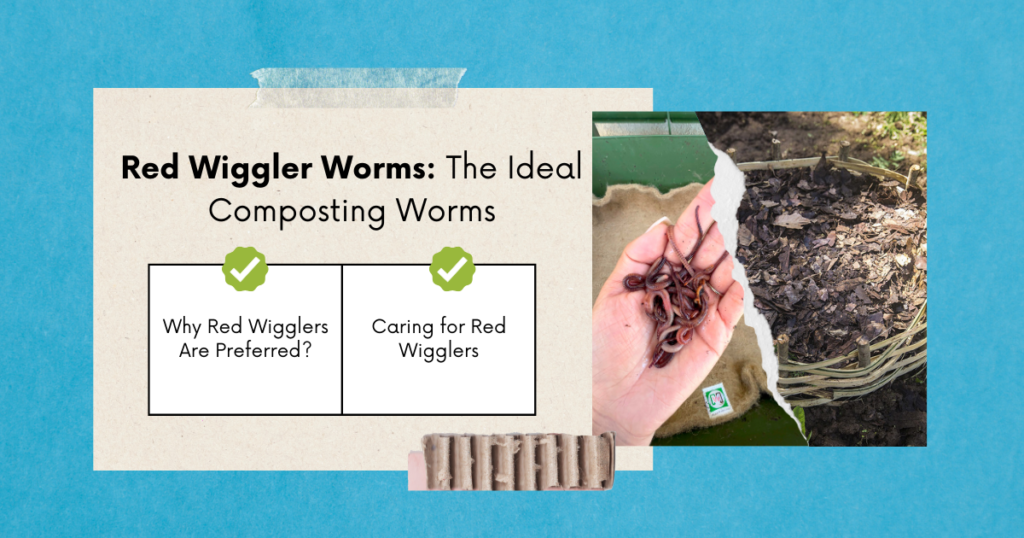
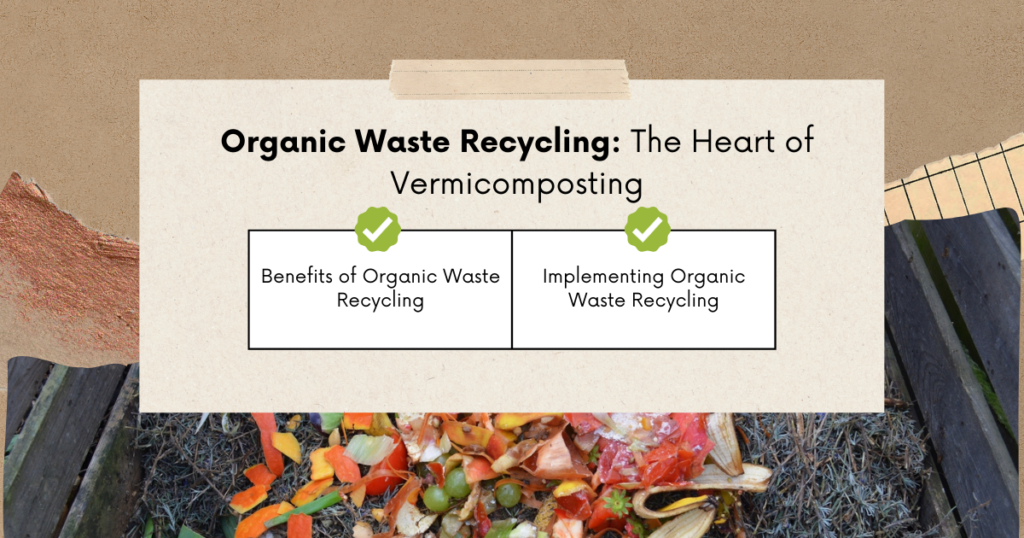 Read more: Traditional Composting Methods…
Read more: Traditional Composting Methods…